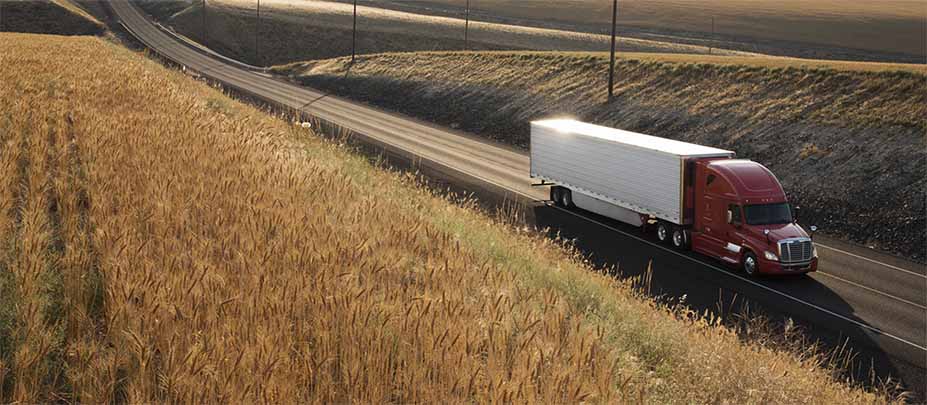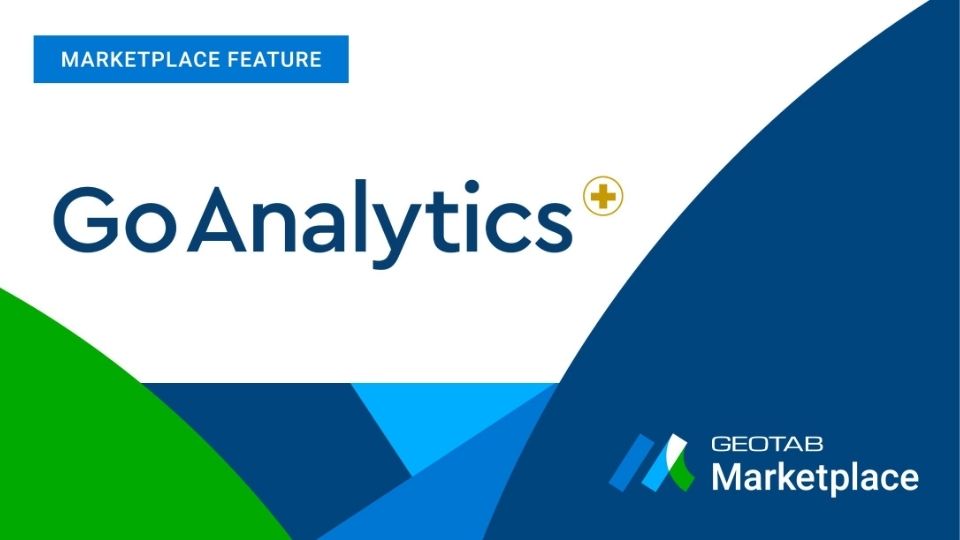How drivers can help drive down fuel costs
Learn how your drivers can significantly lower your fleet’s fuel costs using driver-centric, automated fleet performance management.
By Geotab Team
Mar 30, 2022
Updated: Aug 22, 2024

Hands down, fuel is one of the largest operating costs for trucking fleets. With today’s record-high fuel prices, trucking profitability comes down to one very important factor, fuel economy.
Fuel economy is the amount of fuel it takes you to haul your freight from point A to point B. It’s no surprise that the most significant ways to improve your fleet’s fuel economy lie in the hands of your drivers. How your drivers operate their vehicles can directly affect how much fuel they use each trip by as much as 30%.

There are four key areas where drivers can significantly drive down fuel costs:
- Speed
- Acceleration rate
- Momentum
- Idle time
Four ways drivers can increase fuel economy
Let’s start by looking at the tried and true areas where drivers can help contribute to fleet fuel management and ensure they do it consistently with the help of driver-centric automated fleet performance management.

- Speed: While driving 65–75 mph on the highway allows drivers to reach their destination in less time, it comes with a price. That’s because for every 5 miles per hour trucks drive over 60 mph, there is on average a 0.7 mile-per-gallon decrease in fuel efficiency. Most trucks get the best mileage when driving between 55 and 65 miles-per-hour. If you’re driving over 100,000 miles a year at this speed, you could save upwards of $10,000 on fuel.
- Acceleration rate: Obviously, trucks have to accelerate, and quickly at times. That said, the rate a driver accelerates affects the rate they use fuel. The harder a driver pushes on the gas pedal, the more RPMs their engine will turn, which burns more fuel. Basically, whether it’s entering on-ramps, climbing hills, or speeding up to pass slower vehicles, aggressive acceleration guzzles gas. By accelerating more gradually using progressive shifting, drivers can get up to speed using much less fuel.
- Momentum: Once up to speed, conserving that momentum is critical to using less fuel. There are several strategies for managing momentum in order to save fuel. The first is increasing your following distance. By allowing more space between the truck and the vehicle in front of it, drivers are able to stay off the brakes and maintain their speed in the event that traffic in their lane slows momentarily. Not to mention, increasing their following distance will also decrease their risk of getting into collisions.
Another momentum management strategy is to drive in a higher gear. Lower gears require higher RPMs which burns more fuel. Using cruise control properly can help reduce the need to shift gears and will help maintain momentum when not in heavy traffic.
Lastly, planning ahead in hilly or mountainous terrain will help reduce the need for heavy acceleration. By anticipating steep climbs, drivers are able to more gradually accelerate to build momentum as they approach the hill, using less throttle to maintain speed once they start their ascent. - Idle time: Last but far from least is a factor that is often overlooked, idle time. Drivers often leave their trucks running when loading and unloading their payloads, while refueling and when parked to get some rest. Though sometimes necessary to maintain a comfortable climate inside the cab, fuel is burned that could otherwise be used to haul the load. By leveraging technologies such as the Auxiliary Power Unit or shutting off the engine when parked, drivers can minimize idle time, conserve fuel and improve overall miles per gallon.
Knowing the ways drivers can improve fuel economy doesn’t do much good if you can’t get your drivers to practice those strategies consistently. Drivers already have a lot to manage on the road without having to worry about improving fuel economy. So how can you get them to make the adjustments? You put proven science in the driver’s seat with them.
Consistent, timely feedback promotes better driving
Studies show that the key to helping drivers drive more efficiently is consistently engaging them with fair, accurate and timely feedback in ways that encourage them to improve.
Most trucking companies can’t afford to hire enough driver coaches to uniformly coach their whole fleet. Out of necessity, only the lowest-performing drivers receive attention and usually only after they’ve done something wrong. They frequently receive driver scorecards after the fact and without being told how they can improve.
While this is demoralizing for the driver, the rest of the fleet’s drivers are going about their day without knowing where or how they could be improving their fuel economy.
These problems can easily be solved with a driver performance management solution like LinkeDrive that is easily integrated into a fleet management platform. This software lets you engage and coach all of your drivers in real-time without the need of additional staff resources for driving training.

Giving your drivers the keys
LinkeDrive is a fully-automated fleet performance management solution that empowers drivers with fair and accurate driving data and positive, personalized coaching through daily, weekly and monthly engagements. Based on behavioral science techniques created by Professor Richard Thaler, winner of the 2017 Nobel Prize in Economics and the Behavioral Insights Team, LinkeDrive reaches drivers with frequent positive reinforcement and corrective nudges. This timely feedback is proven to help drivers stay focused on driving efficiently while showing them how to make the needed adjustments as they drive. LinkeDrive can easily be enabled fleetwide to uniformly engage and coach all of your drivers. And being fully automated, it doesn’t add any work to your managers and operations.
With LinkeDrive’s solution, your entire fleet of drivers are able to perform at their peak, maximizing fuel economy like never before.
Conclusion
High fuel prices will continue to pose challenges to trucking profitability. Since trucking companies can’t lower the price per gallon of fuel, the most cost effective option is for drivers to decrease how much fuel they use. Give your drivers the keys — both literally and figuratively — by regularly engaging them with the right data and coaching when and where they need it. Using automated driver-centric fleet performance management solutions, like LinkeDrive, can help trucking companies ensure their drivers are able to increase fuel economy mile after mile and trip after trip.
About LinkeDrive
Based in Boston, Massachusetts, LinkeDrive is committed to helping trucking and logistics companies improve fuel efficiency, heighten safety, and increase the retention rates of their drivers. The company’s combined expertise in cloud-based, mobile technology and the trucking industry helps it to deliver solutions that accurately measure, coach, and report on vehicle dynamics, fuel usage, and driver performance.
For more information about LinkeDrive, visit the Geotab Marketplace or follow LinkeDrive on Facebook, Instagram, LinkedIn, and Twitter.
Subscribe to get industry tips and insights
The Geotab Team write about company news.
Table of Contents
Subscribe to get industry tips and insights
Related posts

9 strategies to increase fleet fuel efficiency and lower fuel costs
July 8, 2025
4 minute read


The fleet safety incentive program checklist for driver engagement that lasts
June 19, 2025
2 minute read

Multi-stop route planners: A fleet manager's guide + best tools in 2025
June 5, 2025
5 minute read

Fuel efficiency techniques every truckload carrier should know
May 30, 2025
3 minute read
